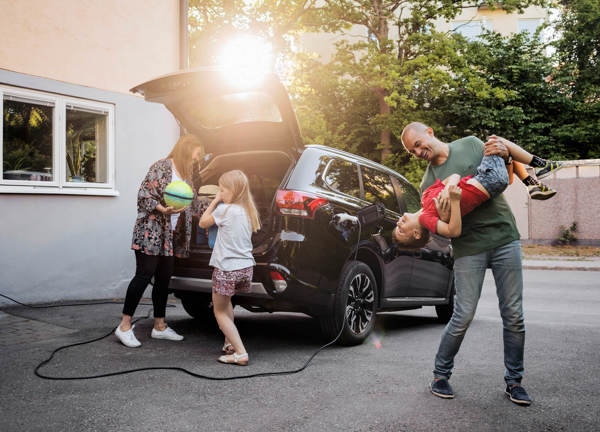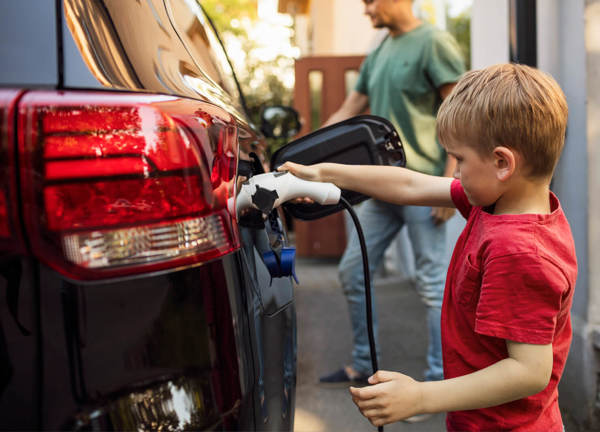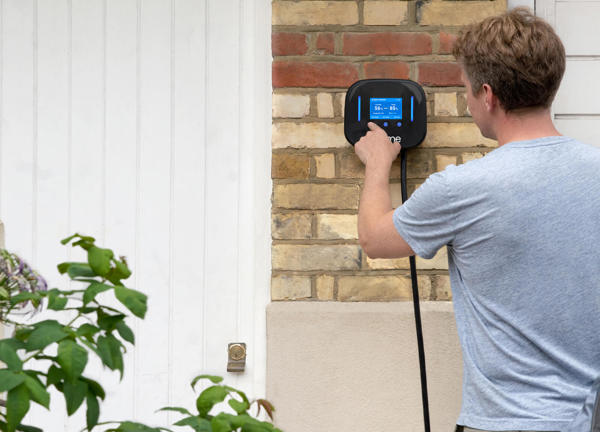Before installing a charger, we need to make sure your property is suitable.
Complete the form and we’ll contact you to arrange a suitable time to visit your property and carry out an inspection.

A subscription service from Jersey Electricity makes EV charging at home hassle-free. Plans start from £30 a month* and include:
*Minimum 3 years subscription. Fair usage consumption policy applies
** Approximate mileage based on 1,500kWh overnight charging per year assuming an EV efficiency of 4 miles per kWh
£30
per month (minimum 3 years)
Perfect for single EV households
Free charger installation
Full warranty
up to 6,000 annual mileage included^
£45
per month (minimum 3 years)
Perfect for multi-EV households
Free charger installation
Full warranty
up to 12,000 annual mileage included^
£85
per month (minimum 3 years)
Perfect for commercial or high mileage users
Free charger installation
Full warranty
Unlimited annual mileage included
Energy use varies: The figure of 4 miles per kWh is only a broad industry estimate. Actual range per kWh depends on vehicle type and many real-world factors.
Efficiency is affected by: speed, acceleration/braking style, ambient temperature and cabin heating/cooling, tyre pressure and load, battery age/condition, and how much regenerative braking can be used. Cold weather, high motorway speeds, or towing can significantly reduce miles per kWh.
Driving an electric vehicle is good for the planet and your wallet. Use this calculator to see how much money you could save on fuel.

With a user-friendly app and smart charger interface, charging your EV at home is child’s play.

Easycharge customers will have a Home Pro by Ohme installed by our technicians free of charge.
The charger offers 7.4kW charging and is up to three times faster than a standard three pin plug. If you have any problems a technician will be sent out, no drama, no hassle and at no extra cost.
Find out more about the Ohme Home Pro.
Can anyone have a home EV charger installed?
As long as you have your own private parking space, and that a suitably sized cable can be run to that space from your existing electrics, then you can have a home EV charger.
What’s included in the Easycharge installation?
All Easycharge subscription packages include a standard installation that is subject to a survey.
The fitting of the charger, sub-meter and up to ten metres of cabling are included along with associated labour. Electrical connections will be made into either an available circuit on your existing distribution board or from your JE meter position. In line with the latest electrical regulations a surge protection device will be fitted to help protect your EV from damage in the event of a power surge.
If your installation scenario is more complex, we will provide a quote for any additional work required.
Will I see what electricity is used for EV charging on my household bill?
Yes. The electricity used by your EV charger is measured by the JE Easycharge sub-meter and will appear on your quarterly electricity bill whether you use it during the day (7am to midnight) or night (midnight to 7am).
Your Easycharge subscription includes either 1,500kWhs a year, 3,000kWhs a year or unlimited charging during the night period, the cost of these units will appear as a credit on your quarterly bill.
Your Easycharge subscription itself is paid monthly by Direct Debit and will not appear on your quarterly household bill.
Can I cancel my subscription?
Yes but Easycharge is designed as an on-going subscription service, if you cancel we will remove the EV charger and sub-meter so you will no longer have access to the service.
The minimum term of the subscription is three years. If you cancel within the three-year period, you will be liable to pay the remainder of the three-year contract.
If I move house, will you install another charger if I’m still under subscription?
If you move house you will need to cancel your subscription and then start a new subscription at your new house.
If you cancel within the three year minimum period you will be liable to pay the remainder of the three-year contract, if you have been a subscriber for over three years you can cancel with no cost payable.
How quickly can someone come and fix the charger if it fails to work?
If a charger is faulty, we can take certain remedial action remotely without visiting your home. Additional measures can be taken with your help. These simple steps will remedy most issues. If an issue does require a call-out, we will attend as soon as possible at no charge.
Before installing a charger, we need to make sure your property is suitable.
Complete the form and we’ll contact you to arrange a suitable time to visit your property and carry out an inspection.